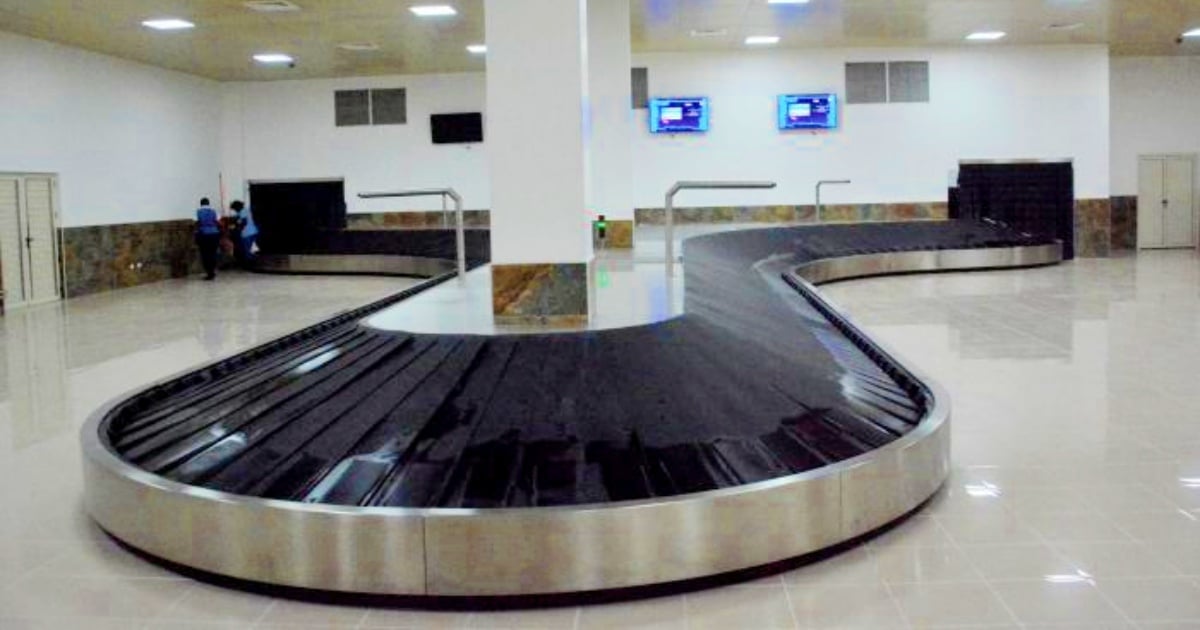The Cuban Aviation Corporation S.A. (CACSA) has announced the final preparations for the launch of a new baggage carousel system in the arrivals area of Terminal 3 at José Martí International Airport. According to a recent statement on Facebook, this new carousel is expected to significantly enhance the efficiency of baggage management, offering a smoother and more comfortable experience for travelers.
This development, imported and contracted by Aviaimport, is a crucial component of the airport's expansion efforts and aims to improve the quality of service provided to passengers. The official statement highlighted that the replacement of the carousels is the result of a collaborative effort among the Cuban Airport and Aeronautical Services Company S.A., CCOA Obras for Commercial Aviation Take Off S.A., and CACSA.
However, CACSA did not specify when travelers arriving at Terminal 3 will be able to enjoy the benefits of the new baggage system. Baggage collection at this terminal has long been criticized for extended wait times, which is perplexing given that José Martí International does not handle a high volume of air traffic.
Revamping Cuban Airports
In mid-January, the Cuban government unveiled plans for a significant increase in operations at its major international airports as part of an ambitious development program slated to continue through 2030. This includes the expansion and renovation of Terminal 3 at José Martí International Airport, the country's primary airport, which is expected to boost passenger capacity by 30%, according to Joel Archer Santos, president of CACSA.
Additionally, plans are underway to expand Terminal 2, enhancing its capacity to accommodate more passengers and airlines in response to potential operational increases. Joel Archer also noted the rehabilitation already completed at the airports of Jardines del Rey and Cayo Largo del Sur. In western Cuba, Varadero's Juan Gualberto Gómez Airport was refurbished last year, while ongoing improvements in the eastern terminals of Camagüey and Holguín focus on air conditioning and other facilities. Future projects include potential investments in the Santiago de Cuba airport by 2025, and runway upgrades across nearly all mentioned terminals, including Isla de la Juventud, aimed at increasing operational safety.
Decline in Flights to Cuba and Drop in Tourism
Despite these modernization efforts, Cuba's airports have shown significant shortcomings affecting traveler experiences in recent months. José Martí International, in particular, faced criticism when Terminal 3 went without air conditioning for two months, exacerbating long waits in hot and humid conditions. In 2024, Cuba experienced numerous route cancellations from various international airlines, resulting in a noticeable drop in the island's air connectivity.
A recent preliminary report by the National Office of Statistics and Information (ONEI) revealed concerning figures about the tourism sector's performance in 2024, painting a grim picture for one of the nation's key revenue sources. The number of international visitors fell short of projections, showing a decline compared to previous years. Until November 2024, Cuba welcomed 2,719,259 travelers, representing 95.2% of the total recorded in the same period of 2022, translating to 137,047 fewer travelers. Of these, international visitors numbered 2,005,390, marking a 92.1% decrease compared to the prior year, equivalent to 172,451 fewer visitors.
FAQs on Havana Airport Upgrades and Tourism Impact
What improvements are being made at Havana's José Martí International Airport?
The airport is undergoing an expansion, including a new baggage carousel system in Terminal 3 to enhance efficiency and passenger experience. Further expansions are planned for Terminal 2 to accommodate increased operations.
Why has there been a decline in flights to Cuba?
Cuba has faced numerous route cancellations by international airlines, leading to reduced air connectivity and impacting travel and tourism on the island.
How has the decrease in tourism affected Cuba's economy?
The decline in international visitors has negatively impacted Cuba's economy, as tourism is a major source of income. The drop in visitor numbers has further strained the country's economic situation.
